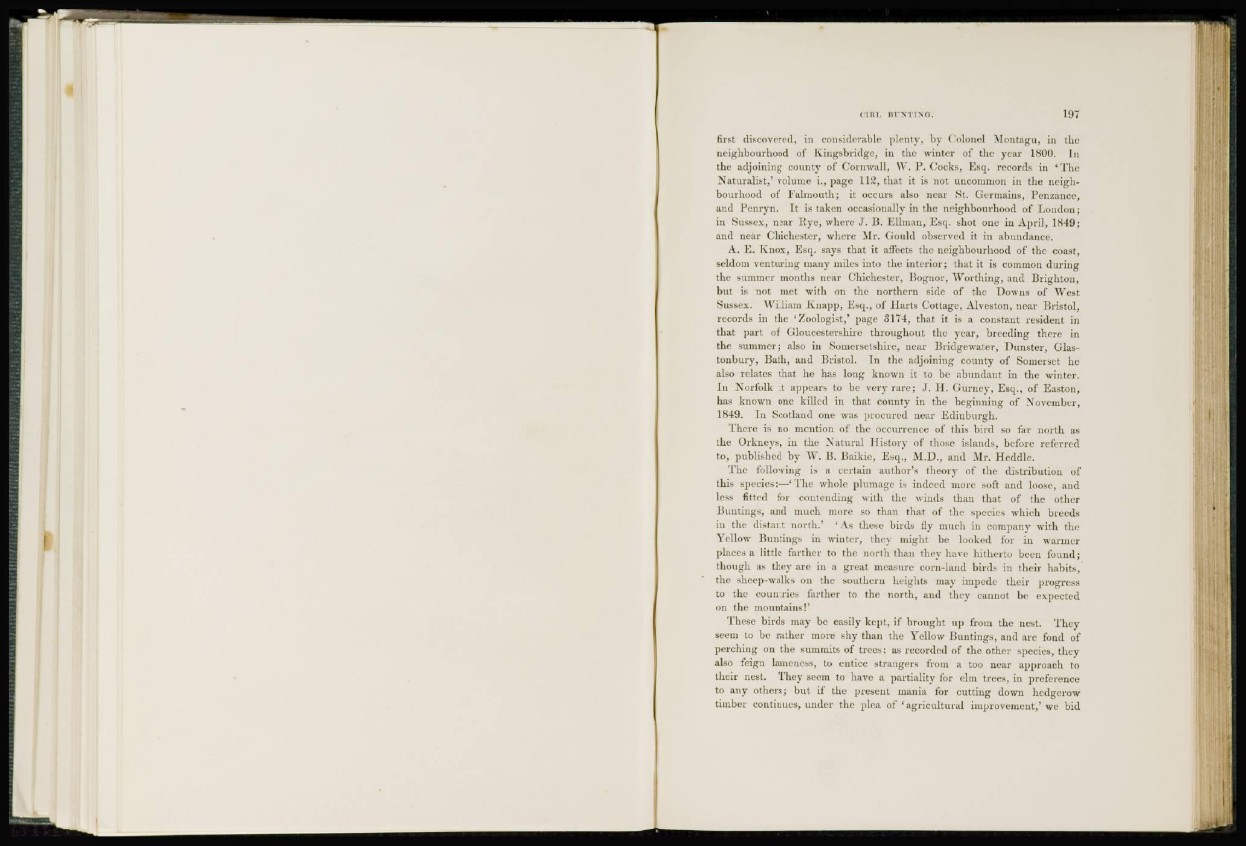
first discovered, in considerable plenty, by Colonel Montagu, in the
neighbourhood of ECingsbridge, in the winter of the year 1800. In
the adjoining county of Cornwall, W. P. Cocks, Esq. records in 'The
Naturalist,' volume i., page 112, that it is not uncommon in the neighbourhood
of Falmouth; it occurs also near St. Gcrmains, Penzance,
and Penryn. It is taken occasionally in the neighbourhood of London;
in Sussex, near Rye, where J. B. Ellman, Esq. shot one in April, 1849;
and near Chichester, where Mr. Gould observed it in abundance.
A. E. Knox, Esq. says that it affects the neighbourhood of the coast,
seldom venturing many miles into the interior; that it is common during
the summer months near Chichester, Bognor, Worthing, and Brighton,
but i s not met with on the northern side of the Downs of West
Sussex. William Knapp, Esq., of Harts Cottage, Alveston, near Bristol,
records in the 'Zoologist,' page 3174, that it is a constant resident in
that part of Gloucestershire throughout the year, breeding there in
the summer; also in Somersetshire, near Bridgewater, Dunster, Glastonbury,
Bath, and Bristol. In the adjoining county of Somerset he
also relates that he has long known it to be abundant in the winter.
In Norfolk it appear* to be very rare; J. H. Gurney, Esq., of Easton,
has known one killed in that county in the beginning of November,
1849. In Scotland one was procured near Edinburgh.
There is no mention of the occurrence of this bird so far north as
the Orkneys, in the Natural History of those islands, before referred
to, published by W. B. Baikic, Esq., M.D., and Mr. Heddle.
The following is a certain author's theory of the distribution of
this species:—''['he whole plumage i s indeed more soft and loose, and
less fitted for contending with the winds than that of the other
Buntings, and much more so than that of the species which breeds
in the distant north.' ' As these birds fly much in company with the
Yellow Buntings in winter, they might be looked for in warmer
places a little farther to the north than they have hitherto been found;
though as they are in a great measure corn-land birds in their habits,
the sheep-walks on the southern heights may impede their progress
to the countries farther to the north, and they cannot be expected
on the mountains!'
These birds may be easily kept, if brought up from the nest. They
seem to be rather more shy than the Yellow Buntings, and are fond of
perching on the summits of trees: as recorded of the other species, they
also feign lameness, to entice strangers from a too near approach to
their nest. They seem to have a partiality for elm trees, in preference
to any others; but if the present mania for cutting down hedgerow
timber continues, under the plea of 'agricultural improvement/we bid